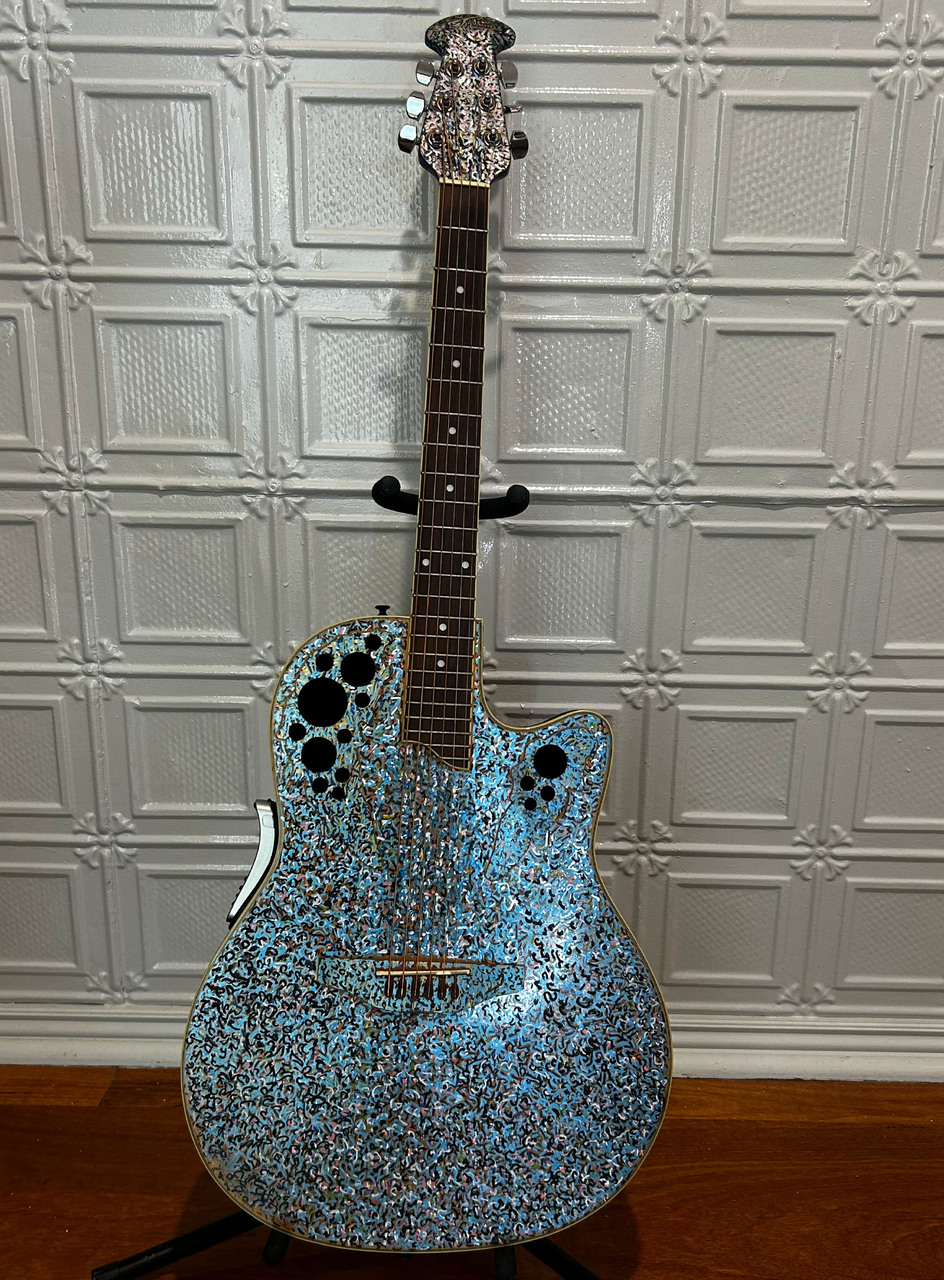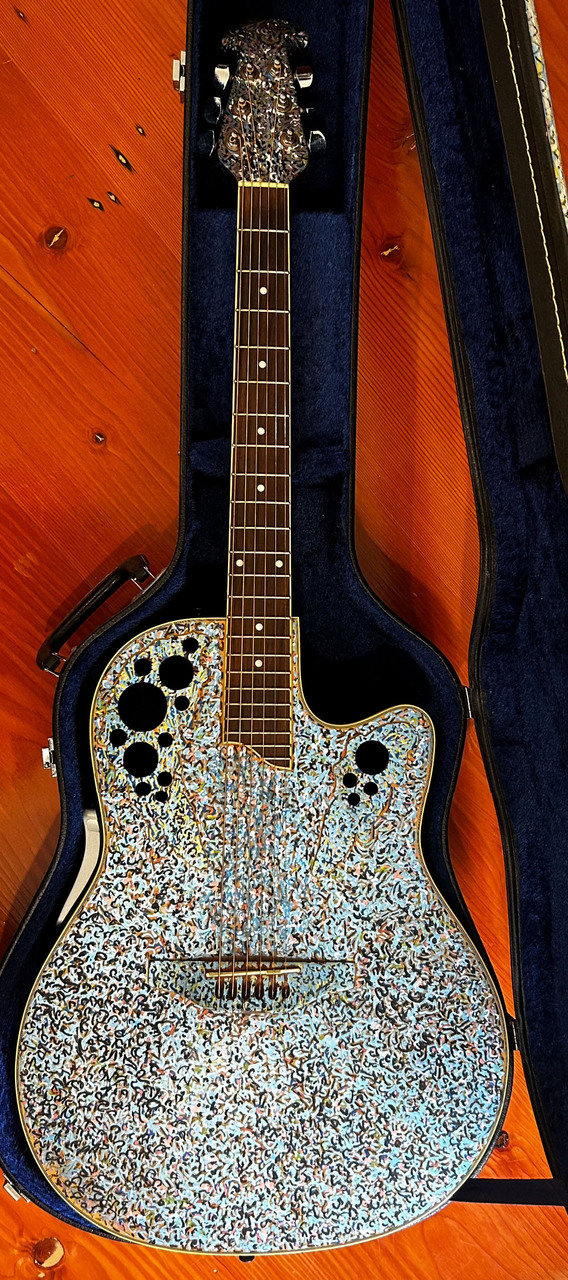
Art and music - old or damaged items transformed into functional decorative pieces?
Have you ever been captivated by the concept of taking weathered or damaged items and transforming them into functional, eye-catching decorative pieces? A few years back, I stumbled upon a scratched guitar, and I decided to breathe new life into it, drawing inspiration from the intricate Moresque ornamental patterns. As I worked on the designs, my mind wandered to the enchanting Alhambra palace in Spain, and the guitar began to morph in my hands. Depending on the lighting, it could take on a dominant metallic blue or a prominent golden hue, a feature not easily captured in photos. However, you may get an idea from the photos I have attached, same guitar different location. I wonder, does the notion of an object that shape-shifts with the light intrigue you as much as it does me? Is it unique in its ability to attract your interest?
I find satisfaction in reviving and adorning weathered or aged instruments. There's an allure to objects that hold mysterious pasts, histories concealed from my knowledge. I often ponder whether I'm alone in forming attachments to these objects, not knowing if they possess a rich history or a noteworthy journey. How many instruments out there began their lives as mere introductions to someone's musical journey, only to be left behind in favor of new passions or greater musical pursuits? Are these instruments, even when scratched or disfigured, appreciated for the stories they carry?
In my eyes, musical instruments transcend mere functionality; they are beautiful works of art in their own right. However, I exercise caution when it comes to painting instruments that are new or possess naturally stunning surfaces. For instance, I own a Fender dreadnought acoustic guitar, and the thought of altering its exquisite mahogany surface would be sacrilege. I wouldn't even contemplate painting it. Yet, some may question my decision to repaint the surface of the pictured Ovation guitar despite its scratches, along with the mystery of how those scratches came to be.
It's important to note that some of the instruments I've chosen to restore are beyond repair and no longer serve a functional purpose, like an old saxophone that I acquired and transformed into a piece of art. This raises the question: do I prioritise functionality when working on these instruments, or is my primary objective to enhance their aesthetic appeal for room decoration? Or, perhaps, am I engaged in the delicate art of refurbishment and the creation of unique pieces of art?

Post Views : 196